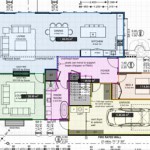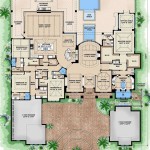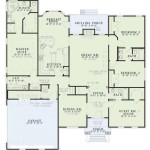Essential Aspects of Simple Floor Plans With Dimensions in Feet
Floor plans are essential tools for homeowners, architects, and builders. They provide a clear and concise overview of a building's layout, dimensions, and features.
Benefits of Using Floor Plans with Dimensions
Floor plans offer several benefits:
- Visualize the Layout: Floor plans allow you to visualize the spatial arrangement of a building, making it easier to understand how different rooms and spaces connect.
- Determine Dimensions: Dimensioned floor plans provide precise measurements of room sizes, wall lengths, and other structural elements.
- Plan Furniture Placement: You can use floor plans to experiment with different furniture arrangements and ensure that furniture fits properly in each room.
- Identify Obstacles: Floor plans help identify potential obstacles, such as low ceilings, narrow hallways, or obstructed views. li>Estimate Construction Costs: Dimensions in floor plans enable contractors to accurately estimate construction materials and labor costs.
Creating Simple Floor Plans
Creating floor plans with dimensions is relatively simple:
- Measure the Building: Use a tape measure to obtain accurate measurements of room dimensions, wall lengths, and any other relevant features.
- Draw a Rough Sketch: Sketch a basic outline of the building's layout, including walls, doors, windows, and stairs.
- Add Dimensions: Mark the measurements on the sketch, clearly indicating the length, width, and height of each room.
- Use a CAD Program (Optional): For a more precise floor plan, consider using computer-aided design (CAD) software to create a digital version.
Tips for Dimensioning Floor Plans
To ensure accuracy, follow these tips:
- Use a Scale: Choose a consistent scale for the floor plan, such as 1/4 inch equals 1 foot.
- Dimension All Walls: Mark the length of all exterior and interior walls.
- Dimension Openings: Include the dimensions of doors, windows, and other openings.
- Specify Ceiling Heights: Indicate the height of the ceilings in each room.
- Use Clear Labels: Clearly label all dimensions and features, using abbreviations or symbols if necessary.
Conclusion
Simple floor plans with dimensions in feet are indispensable tools for understanding and planning building layouts. By following the essential aspects outlined in this article, you can create accurate and informative floor plans that will serve multiple purposes.

12 Examples Of Floor Plans With Dimensions

12 Examples Of Floor Plans With Dimensions

Floor Plans With Dimensions Including Examples Cedreo

Picture Of Simple Two Bedroom Single Floor House With 68 M² Area 2 Plans Design

12 Examples Of Floor Plans With Dimensions

Add Measurements

12 X45 Feet Ground Floor Plan House Plans Simple

Floor Plans With Dimensions Including Examples Cedreo

How To Properly Read Floor Plans And What Details Look For

How To Read A Floor Plan With Dimensions Houseplans Blog Com
Related Posts








